Greenkeeper profile: Whiteleaf GC’s Mike Ginger
Related Articles
Whiteleaf GC in Bucks is a Colt-designed venue maintained by just three greenkeepers – one of whom is a part-time volunteer. Despite this, the highly-regarded course usually remains open 365 days of the year. GreenKeeping speaks to course manager Mike Ginger to find out how they achieve this – and to learn about their bunker refurbishment project
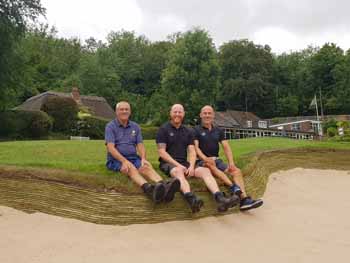
Whiteleaf Golf Club, which is also home to Monks Risborough Cricket Club, was founded in 1907. Tucked neatly behind Whiteleaf Cross and overlooked by Pulpit Hill with its ancient hill fort, the course underwent major changes to its design soon after the end of the First World War. The club acquired additional land and soon engaged in consultation with the design services of the legendary Harry S. Colt.
GreenKeeping caught up with its course manager, Mike Ginger, to find out how the venue is kept open 365 days a year despite it only having two full-time employees.

How did you end up as the course manager at Whitleaf Golf Club?
I fell into greenkeeping on leaving school and have been in the industry for 25 years now. I was playing a lot of golf back then and it seemed like the obvious thing to do. I immediately fell in love with the outdoor life and the flexibility that the job provided.
I started on the old YTS scheme and studied for two years at Aylesbury College to achieve NVQ levels 1 and 2.
I was lucky enough to get a work placement at Hazlemere Golf Club in Buckinghamshire, the course closest to my childhood home and trained under a great guy, Russell Lucas, who I have stayed firm friends with ever since. I stayed at Hazlemere from the autumn of 1993 through to spring of 1997 where I moved on to Harewood Downs Golf Club. I continued learning the trade and was able to move up to first assistant while making a start on NVQ Level 3 at Oaklands College.
I moved back to Hazlemere in 2004 as deputy head and then onto my current role as course manager at Whiteleaf Golf Club in 2009.

How big is your team?
We have a very small team at Whiteleaf to say the least; myself and my deputy Justin Sugg are the only members of staff employed by the club. While the course is nine holes the whole area to be cut is around 12 hectares, so the pressure is on all year round. We are lucky enough that one of our long serving members, Roger Smith, is a retired greenkeeper and he gives his time, free of charge, on a regular basis. He normally cuts the rough and fills in anywhere he can which is an absolute God-send because without him the task would be nearly impossible. Justin has been with me for six years now and shares the same ethos on how we want to present the course and understands implicitly the quality of surface we wish to produce.
It is vital that we all know our tasks and we have absolute trust in each other to deliver them to the highest level. Time management is extremely important as there is no room for down time so it is imperative that we have good communication with all other areas of the business so that we can take advantage of the quiet times. The course can fill up extremely quickly so knowing where the golf is can be the difference between a day being very productive or a complete disaster.
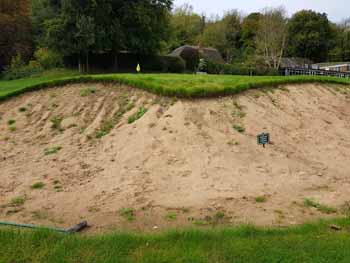
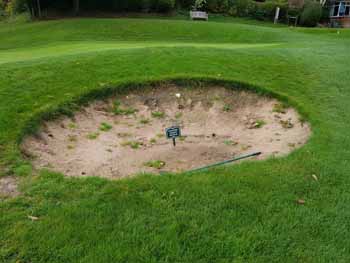
The course is played 365 days of the year, how do you manage to ensure best playing surfaces throughout the seasons with just the two full-time employees?
We have to be very proactive with all aspects of our course management as we need to be one step ahead of any potential problems that may arise. Normally most challenges come from the weather so we are part-time meteorologists these days on top of everything else. The management during the winter months is key to everything that we do through the rest of the year. If we come out of winter in bad shape then with limited budget and resources it is incredibly difficult to get up to speed in time for the season and then we are continually chasing our tails.
I know that the use of temporary greens and winter mats is a contentious issue with golfers and greenkeepers alike but the use of them has been invaluable to us over the last nine years. We have very small surfaces so we can’t spread winter wear, and while we use temporary greens as infrequently as possible it does make a huge difference.
Our surfaces are always healthy and disease free coming into spring and even with the harshest of starts are very quick to come on line compared to others around us that don’t use temporary surfaces. That may be complete coincidence, but I very much doubt it. Once again, a supportive, understanding membership who are equipped with the correct information can be a valuable weapon against the few, but expected negative comments.
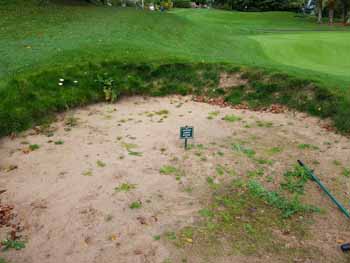
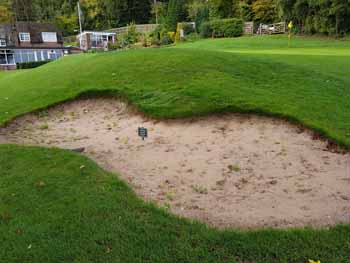
With only two of you managing the course full-time, what particular skill sets do you need and how have you learnt to improve these to cope with the continual workload?
Time management, as I’ve mentioned, is paramount but also you must be able to prioritise the jobs into an order of importance. You need to accept that some jobs are not going to get done within the timeframe that you have available. But most importantly you need to be able to let go despite the fact that we are both perfectionists. The course could easily become your whole life and completely swallow you up as there just aren’t enough hours in the day. While I enjoy my job immensely and am extremely proud of what we are able to achieve I do believe that you must have a life outside of the job to give you a good balance. I certainly subscribe to the phrase ‘work to live, not live to work’ but even so I found it very difficult to leave some jobs unfinished in the beginning. If you have prioritised correctly then the jobs that are left are only of minor importance anyway.
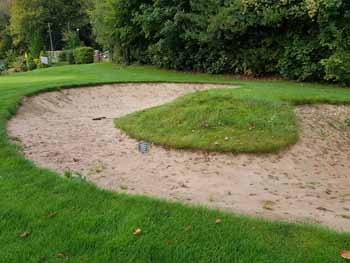

What aeration programme do you run across the course?
We have a Toro 648 pedestrian aerator in the shed, which is a fantastic machine. The course was established in 1907 so we have small greens that very often have steep banks around them and the mobility of the 648 means it has no problem negotiating its way around. All our aeration is focussed on greens, tees and approaches and in all cases we change our tine size and depth on a regular basis to maximise the operation. We try to aerate as often as we can which tends to see more aeration carried out in autumn, winter and spring as we don’t have too much time during the summer months. We have a maintenance week in mid-August where we are able to focus our attention on a specific project. The last few years we have focussed on hollow coring greens and tees and backfilling with sand. I like to verti-drain the greens every four years or so as they are old style push-up and it always aids with avoiding any issues further down in the sub-structure and maintains good drainage.
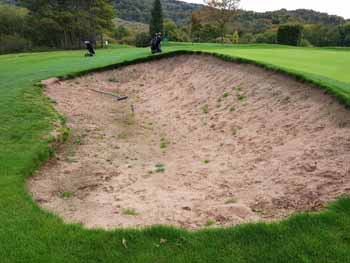
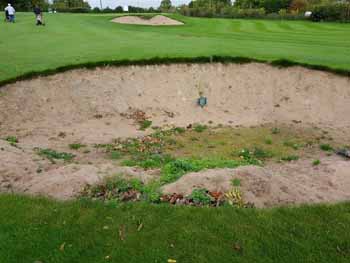
The first half of this year wasn’t great weather wise, what challenges did this present to you, how did it impact on the course and where are you now in terms of course condition?
It’s certainly been an amazing few months that’s for sure! The course is situated on the second highest point of the Chilterns and is north facing, so the cold weather and in particular the snow caused us some serious problems. We had two feet of snow with drifts up to five feet in places before Christmas, which kept us closed for two weeks or more and put major projects back. This happened again on two more occasions at the start of the year which put us and the course a good six weeks behind schedule. But nature has a way of getting back on track and when the weather turned wet and warm in mid-March the whole place just burst into life. With the first proper spring that we’ve had in many a year we went from six weeks behind to being way ahead of where I would usually expect the course to be in a matter of two or three weeks. By May the course was playing like it normally would in June with firm, fast surfaces and a lush dense sward across the board. We seem to have levelled off now and the course is as I would expect for the time of year.
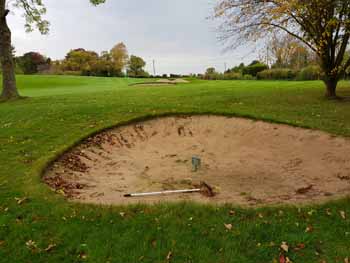
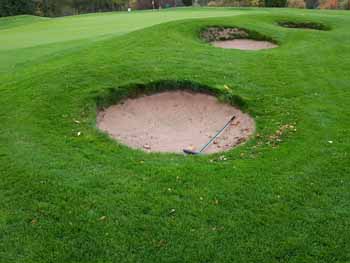
How do you communicate with the members and take feedback with regard to course condition?
We have a blog on the website which we use through the year and a number of members’ forums that have been invaluable. Social media is a great tool these days also but the best way I find is just by talking with them. We have both been encouraged from day one to be part of the club and play our golf here, which many in the industry warned me against at the beginning. I have been able to play with people from all sections of the club’s demographic and I believe this has made us far more approachable and members feel they can simply ask any questions that they may have and get an honest, intelligent answer. We have an incredibly supportive and understanding membership who respect the job we do and trust us to deliver. I do truly believe that this is due to mixing with them and being part of the club in the same way that they are helps to galvanise everyone together so we are all pushing in the same direction for a common cause rather than banging in to each other all the time.

What irrigation system are you currently using and how is it set up across the course?
We are currently running with a Hunter ICC control panel which provides an automated system to the greens alone. Each green also has a water point from which all but one tee can be reached with a couple of hoses. During hot or dry periods watering becomes our biggest work load and often this becomes too great for us to produce the teeing grounds we would like. To try and negate this we use regular applications of liquid feeds combined with PGRs and wetting agents which allows the plant to hold on a little longer but without regular water you are fighting a losing battle at times. The wet start to the year was great but caused the grass plant to become lazy and reduce its root depth. The surfaces are now drying out a lot quicker as a result which is an obvious area of frustration. We are currently looking into the possibility of a bore hole and an automated system for the tees as we feel this would maximise our water usage and hopefully put us in good stead for the future. Water is an extremely expensive and precious commodity that should not be taken for granted, it will only become more of the same moving forward.
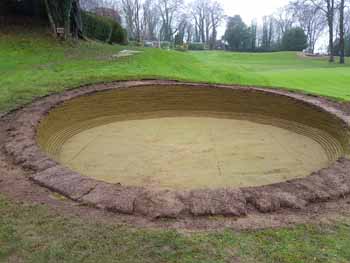
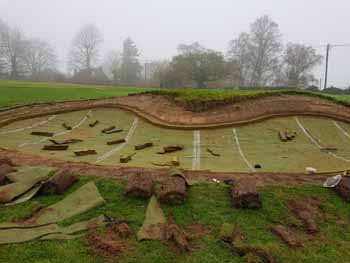
Last July the course suffered storm damage, particularly the bunkers. What happened and what damage was sustained?
We were unfortunate enough to be right in the path of a storm that deposited a huge deluge of water in a very short space of time, flooding not only the course but parts of the clubhouse as well. All of our 23 bunkers were either washed out and / or had vast amounts of silt and soil left in them. With the help of some volunteers from the club we were able to clear out and then reinstate the sand in 14 of the smaller, flatter bunkers. Being a very hilly course, we had some bunkers with large, steep sand faces and so were faced with a decision: reinstate or look for a solution.

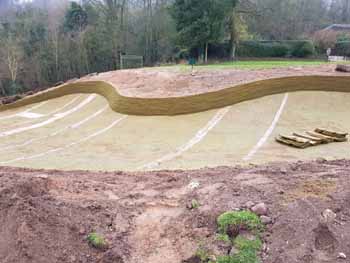
What did you choose?
There was obviously a fault with the design of the bunkers and while the weather we experienced was certainly freakish it is certainly becoming much more likely that storms of this nature can and will affect us again. As mentioned before, we are a small club with a limited budget and resources, and so we felt that rather than reinstate the bunkers as they were and possibly throw good money after bad that we would seek out a possible solution. I was aware of the work that EcoBunker had been doing after seeing some renovations on a seaside links earlier that year and also through the industry press.
We researched and considered several different construction options, but after the first meeting with EcoBunker Ltd it became clear that they were a great fit for us. Their ideas of softening the steep sand faces with artificial riveting and re-designing the surrounding areas to re-direct the water away were instantly appealing and quite quickly it was decided that this was our preferred solution.
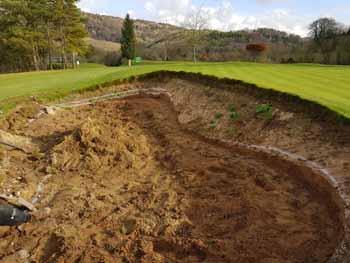
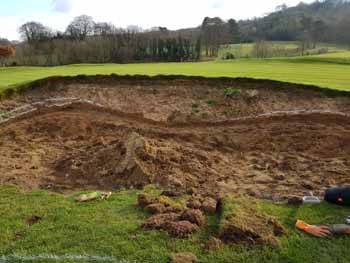
How was the work undertaken, what was the process and how many bunkers were refurbished?
The work was scheduled to start in late November and would take two weeks to complete the work on nine bunkers. Unfortunately, heavy snowfall limited the work to only a couple of days so the Eco Bunker team had to return the week before Christmas. Five of the nine bunkers were completed and work was due to re-start in the new year. Once again heavy snowfall delayed the work from continuing and eventually the last four were completed in late February. We managed to have them back in play towards the end of March which was eight months after the storm. Once again, having an understanding membership that could see the benefit of the work being carried out was invaluable.
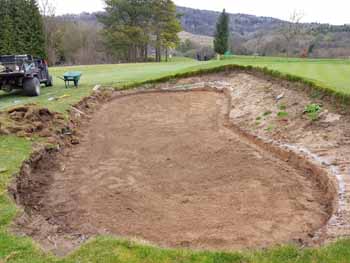
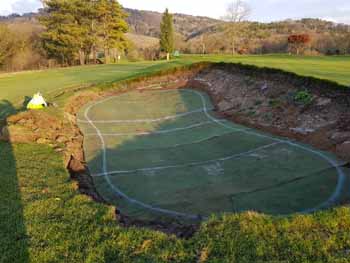
What has the end result delivered, are the members happy and do you have further plans for the remaining bunkers across the course?
The end result is absolutely fantastic, I haven’t heard a bad word said about them – 99.9% of our members would agree and that is something that almost never happens. They look great, they play great and they are a lot less labour intensive to maintain.
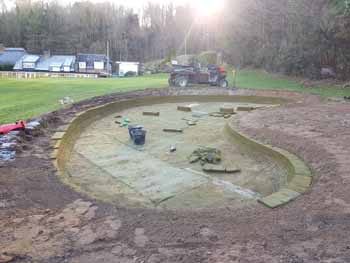
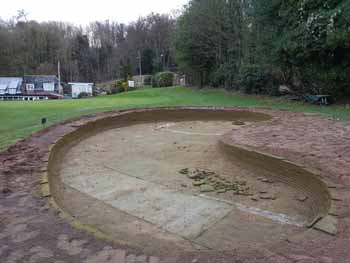
What do you think are the strengths that have carried you through your career and current position at Whiteleaf Golf Club and what are your goals for the course?
I’ve been in the industry for 25 years now so I’ve learnt a lot in that time in terms of the technical aspects of managing fine turf. While these skills are obviously integral in order to manage and produce great surfaces I would say that my greatest strength comes more from everyday life. I’m a really good people person and I firmly believe that if you are approachable and treat people as you would want to be treated it is amazing what can be achieved. In my experience greenkeepers can make themselves seem aloof by creating an ‘us and them’ environment. I understand the difficulties in opening up a healthy dialogue with some memberships that can be resistant to change or just generally difficult but all roads can start with something as simple as a smile and a ‘good morning’ as opposed to a face like thunder hooning past on a machine. Obviously, it’s not just a one-way street but we can be as much of a problem in a lack of favourable relations between ourselves and our memberships. With the problems that all our clubs face in the current climate it is essential that all facets of our businesses work together if we are to have a healthy future.
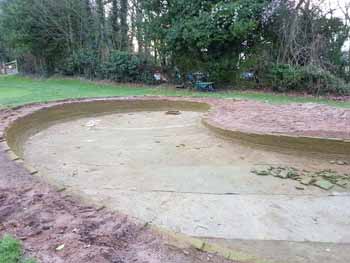
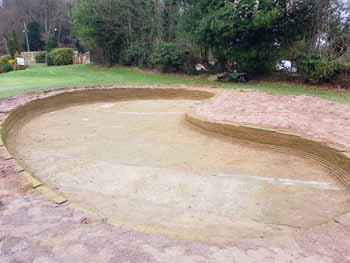
GreenKeeping: What height of cut do you use across the greens, tees, fairways and rough?
Greens, 3mm, which takes 14 man hours weekly. Tees 12mm and 12 hours. Fairways 17mm and eight hours. Rough, 64mm and 12 hours.

The course plays host to some interesting wildlife, can you outline what you do to support ecology?
We have been working with Chiltern Conservation for a few years now supporting projects such as the re-introduction of juniper and managing our site sympathetically in order that we are a great link between the nature reserves on either side of us.
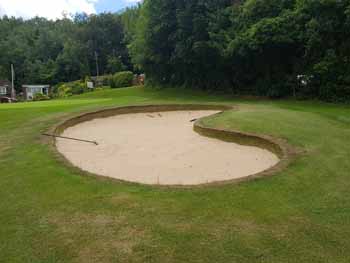
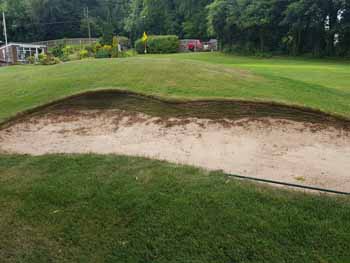
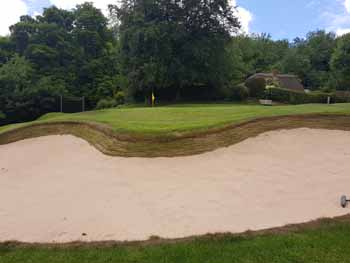


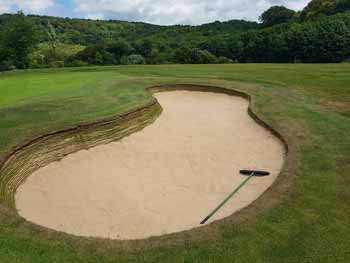


We were awarded LWS (Local Wildlife Site) status in 2016 as we have a number of native orchids such as the scented, pyramidal and bee along with other native flora. We have a few good colonies of glow worm in our long rough areas and so we continue to manage these habitats with their welfare in mind. We have a nesting pair of red kites, kestrels and a flock of swifts that return every summer. One of the most interesting visitors we have had was a honey buzzard that had ventured a little further north than usual, absolutely beautiful bird. Both roe and muntjac deer, foxes, badgers, rabbits, hares and owls make this a very diverse site sitting in an area of outstanding natural beauty backing onto The Ridgeway. The stunning vistas make this a great office all year round and it’s a real pleasure to be custodian of such a beautiful site.
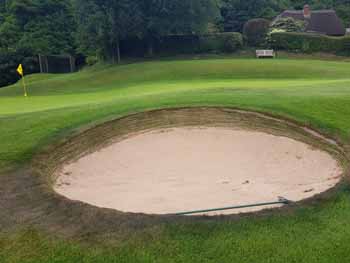
What current machinery fleet are you using and is there a particular piece that you have a preference for and why?
We have a bit of a mixture of Toro and John Deere but I must admit that I’m more of a Toro man. I think that our rotary Toro 3500 Sidewinder is a great machine. It’s comfortable, reliable and does a great job but it’s also very versatile which is superb for us. We use it to cut rough and surrounds because it’s so easy to change the height of cut.

The pressures on the course manager to deliver a better product are growing year on year and the level of professionalism is rising with this. What do you think are the qualities now needed to meet the requirements and demands of golfers by someone in your position and how does this help contribute to the business of golf?
Unfortunately, it seems that the pressure on course managers is rising at a time when the business of golf seems to be declining. The customer wants top end product but due to the transient nature of club golf these days, which devalues the product provided, they are less inclined to want to pay for it. The industry finds itself in a period of uncertainty and change when clubs in close proximity should be working together rather than undercutting each other at every opportunity in order to restore value to the product.
Our professionalism as greenkeepers has driven the industry to where it is today and we as a collective constantly produce a high quality product for our clubs to sell on what is a congested market place. Too many times those tasked with running golf clubs up and down the country fail to sell the product correctly and so it always surprises me that we’re the ones constantly under pressure. Most people are working with smaller teams and smaller budgets and are still being asked for more. We are blessed that our industry has so many multi-talented people who pull up trees every day to produce great courses against all the odds. Until such time that either the value of the product increases or the running costs come down maybe there isn’t any more to give.

What currently gives you the greatest satisfaction from your job?
One of the beauties of this job is the fact that you get to see each activity through from start to finish. A lot of jobs people do they are just part of a process so it’s always incredibly satisfying to stand by the clubhouse on a Friday afternoon and look out on what’s been achieved; even after all these years that never wears thin. Three years ago, the club asked for my input on an issue we were having with balls being hit onto a road that runs alongside one of the holes. I came up with a plan to re-route the hole, creating a dog leg by moving 22 tall field maple trees from one part of the course and then move the fairway 50 yards over and add four bunkers to create a very different hole. It was not only successful in stopping the issue but is now one of the best holes on the course.

What advice would you give to youngsters starting out and wanting to pursue a career in the profession?
Mike Ginger: One of the issues the industry faces moving forward is the lack of young people that are pursuing a career in greenkeeping. The hard work involved and the very low starting salaries don’t seem to be that appealing. A solution to this obviously needs to be found and fast but as we know, greenkeeping is not all about the money, I’m sure there’s not too many millionaires trimming up bunkers right now! I think that my advice would be to stick with it. It’s an excellent career that’s rewards are far greater than money alone. Work hard, listen and learn from those around you and don’t be afraid to let your own artistic interpretation allow you to put your stamp onto what you do.

What changes do you think need to be made to benefit the industry?
The industry is changing, but slowly. I hope it can change quickly enough to move with these uncertain times. We focus an awful lot on the perceived success stories of our so called bigger facilities when to me the biggest achievers are the people who manage to deliver under incredibly difficult circumstances. The clubs that support their employees and departments and keep the facility going year on year when otherwise it would fall by the way side. Sometimes the word ‘club’ gets taken too lightly, to be part of a club should mean that its welfare and survival mean a great deal to that individual and maybe we could do more to support and promote these types of successes. The golfing landscape would be a far more barren place without clubs like this, proper golf clubs for everyday people that quite often are the starting point for those that go on to do great things within the wonderful industry that is golf.

























